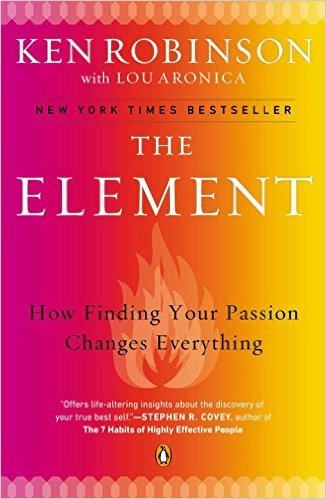The Element: How Finding Your Passion Changes Everything by Ken Robinson, PhD (©2009, Penguin Books: New York, NY) deals with the point where natural talent meets personal passion. Ken explores the conditions that lead us to live lives filled with passion, confidence, and personal achievement. The stories about people from a wide variety of fields entertain and inspire. The book is a classic. If it’s not on your shelf, click the icon below to get your copy. If you read it a while ago, my summary will be a good review. Also check out Sir Ken’s TED Talks.
Sir Ken Robinson
- Sir Ken is an English author, speaker, and international advisor on education in the arts to governments, non-profits, education, and arts bodies. He was Director of The Arts in Schools Project (1985–89), Professor of Arts Education at the University of Warwick (1989–2001), and was knighted in 2003 for services to education. Originally from a working-class Liverpool family, Robinson now lives in Los Angeles with his wife Marie-Therese and children James and Kate.
Introduction
- We are all born with tremendous natural capacities, and we lose touch with many of them as we spend more time in the world. Ironically, one of the main reasons is education itself. Young children are confident in their own imagination and usually see themselves as being creative when they start school. By the time they finish formal education, most don’t feel that way. Ken uses the stories of people who did find their Element and offers them to help us all do the same. Most of the stories were gathered via direct interviews that often feature twists, turns, and surprises.
Who’s Stories?
- Here are some of the people who’s unlikely stories help make this book so special: Matt Groening – Simpsons creator, Gillian Lynne – dancer and founder of company that did Cats and Phantom of the Opera, Paul Samuelson – economist and author, Paul McCartney – Beatle, John Cleese – Monty Python member, Mick Fleetwood – drummer Fleetwood Mac, Bart Conner – Gold Medal Gymnast, Gordon Parks – Founder of Essence Magazine, Buckminster Fuller – architect, Ewa Laurance – woman’s world billiards champion, Aaron Sorken – award winning writer for stage, movies, and television, Meg Ryan – Actress, Arianna Huffington – creator of The Huffington Post, and Richard Branson – Entrepreneur.










